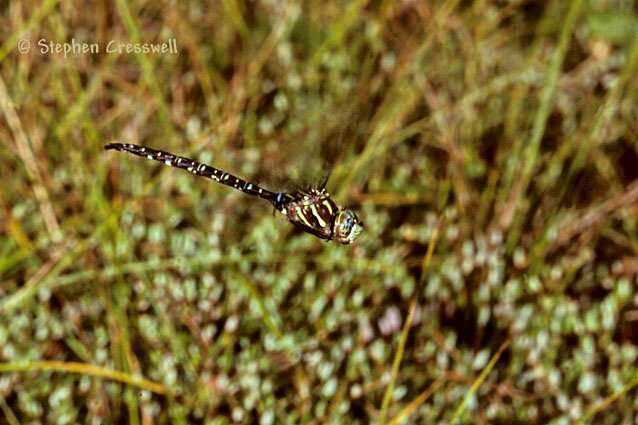 Family: Aeshnidae
Family: Aeshnidae
Length: typically 70-75 mm
Family: Aeshnidae
Length: typically 70-75 mm
This species takes its common name from its preference for woodland habitats, where it flies in shadowed areas and in dappled light. Look for Shadow Darners at forest creeks, and alongside shaded ditches, ponds, and pools.
Late in the year (October or November) or late in the day (dusk) these may be the only dragonflies patrolling. Note, though, that they are also seen earlier in the year and earlier in the day.
As with other Mosaic Darners, so in this species the lateral thoracic stripes are important. In Shadow Darner these two stripes are relatively straight. The stripes are yellowish on the ventral end, and green or blue at the dorsal end.
In males, the cerci are wedge-shaped.
On the rearmost abdominal segment (S10) spots are usually lacking or obscure.
The abdominal spots of Shadow Darners are not as large or colorful as in some of the other members of the genus Aeshna.
Males and females are similar in this species, but the females markings are duller than those of the male. The wings of females are often tinted with brown, but not always.
Shadow Darners have been reported from many counties across West Virginia.

|
| Dorsal view of the female Shadow Darner. The abdominal spots in this species are smaller and less colorful than those of other Mosaic Darners. |

|
| The rear of the abdomen of a female Shadow Darner. Often one or both of the cerci are broken off, but on this individual they are intact. |

|
| In both males and females, the two stripes on the sides of the thorax are relatively straight. These stripes are yellowish at the ventral end, and blue to green at the dorsal end. |

|
|
|


